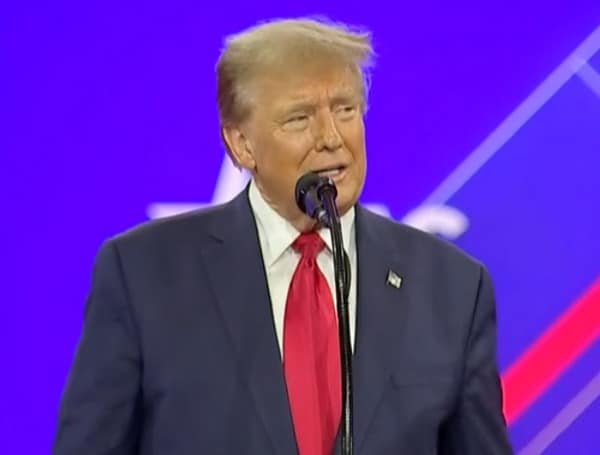
President-elect Donald Trump’s return to the White House could shape the federal judiciary for decades.
With potential retirements on the Supreme Court and Republican control of the Senate, Trump is likely to finish his time as president with a majority of his own appointees on the high court’s bench. During his first term, Trump was able to confirm Supreme Court Justices Neil Gorsuch, Brett Kavanaugh and Amy Coney Barrett, along with 234 other federal judges.
His impact during the second term will “turn on how many judges retire, or pass away,” South Texas College of Law professor Josh Blackman told the Daily Caller News Foundation.
READ: EU Eyes U.S. Gas Deal With Trump, Seeks To Cut Russian Energy Dependence
“Starting in January 2025, there will be far fewer lower court vacancies for Trump to fill,” Blackman said.
There are currently 47 federal judicial vacancies, with 20 more opening up in the near future, according to the Administrative Office of the U.S. Courts. President Joe Biden had 28 nominees still pending confirmation as of October, according to the American Constitution Society.
Some left-wing groups like Demand Justice are pushing senate Democrats to confirm as many as possible before January. “We are going to get as many done as we can,” Senate Majority Leader Chuck Schumer told the New York Times on Friday.
When Trump took office in 2017, there were 108 federal judicial vacancies to fill.
“For the Supreme Court, there is already some speculation that Justice Alito will step down,” Blackman said. “This vacancy would give Trump the chance to appoint his fourth Supreme Court Justice. No President since Reagan has had four. If Justice Thomas steps down, Trump would have five appointees — the most since Eisenhower.”
READ: Trump Secures Arizona, Clinches Final Swing State In Landslide Electoral College Victory
Meanwhile, senate Democrats have already been considering if they should push for Justice Sonia Sotomayor’s retirement and attempt to confirm another judge during the lame duck session, Politico reported Friday. Some liberal voices floated the idea of Sotomayor’s retirement last year, though Democrats expressed concern about publicly calling for the “first Latina justice” to step aside.
Ethics and Public Policy Center constitutional scholar Ed Whelan wrote Wednesday that Trump should have “the opportunity to perpetuate a strong conservative majority on the Supreme Court for at least the next twenty years,” noting he expects Justice Samuel Alito to announce his retirement in spring 2025 and Justice Clarence Thomas in spring 2026.
The GOP is slated to have a majority of at least 53 Republican senators. “Thanks to the abolition of the filibuster, any high-quality Supreme Court nominee will be easily confirmed,” Whelan continued.
JCN President Carrie Severino told the DCNF that Trump has an advantage this time around: rules that make it easier to get nominees confirmed. During Trump’s first term, Democrats “did everything they could to gum up the judicial confirmation process by requiring even district court nominees with unanimous support to run out of 30 hour clock of ‘debate’ time between each vote,” she said.
“Thanks to cloture reform enacted in 2019, district court nominees now aren’t subject to that kind of slow-walking,” she said. “The Biden administration benefited from these changes throughout his administration, and that allowed him to appoint as many judges as he did. Now the second Trump administration will have four full years under those new rules.”
‘Constitutionally-sound judges’
Republican Iowa Sen. Chuck Grassley is expected to reclaim his position as Senate Judiciary Committee majority leader in January, leading the charge on appointments. Grassley looks forward to working with Trump to “confirm highly-qualified, constitutionally-sound judges to the federal judiciary,” a spokesperson for his office said in a statement Wednesday.
READ: Iranian Operative And 2 U.S. Accomplices Charged In Plot To Assassinate Trump
Trump has not yet issued a new list of nominees, but several in the conservative legal world previously told the DCNF some of his appointees to federal appeals courts are likely choices. In the four years Trump has been out of office, many of these appointees have been able to develop a record of rulings that demonstrate their philosophy.
John Malcolm, vice president of the Heritage Foundation’s Institute for Constitutional Government, in August highlighted multiple appellate judges who have been included on prior lists as potential picks. These included Sixth Circuit Judge Amul Thapar, Fifth Circuit Judge James Ho, Eleventh Circuit Judge Barbara Lagos, Eight Circuit Judge David Stras and D.C. Circuit Judge Gregory Katsas, among others.
Vice President-elect JD Vance’s wife, Usha Vance, clerked for Thapar while he was a district judge for the Eastern District of Kentucky.
Please make a small donation to the Tampa Free Press to help sustain independent journalism. Your contribution enables us to continue delivering high-quality, local, and national news coverage.
Android Users: Download our free app to stay up-to-date on the latest news.
Connect with us: Follow the Tampa Free Press on Facebook and Twitter for breaking news and updates.
Sign up: Subscribe to our free newsletter for a curated selection of top stories delivered straight to your inbox.

First published by the Daily Caller News Foundation.
